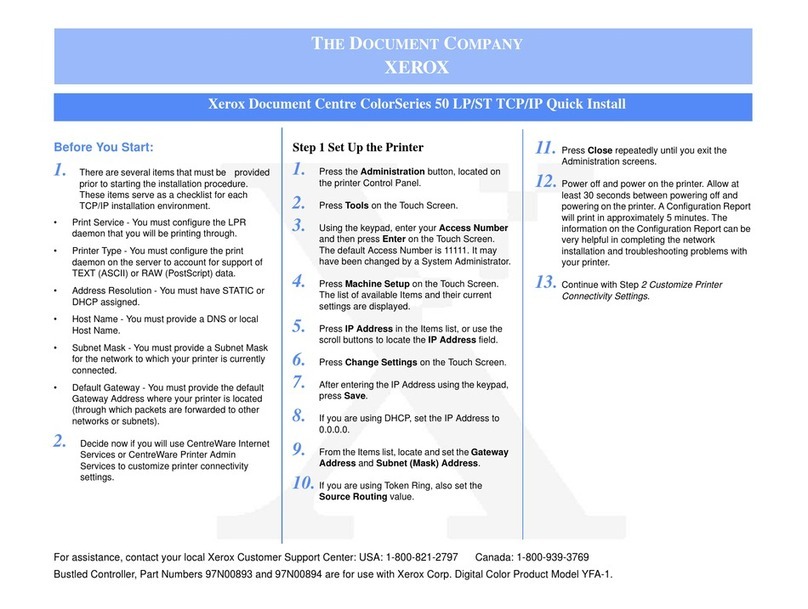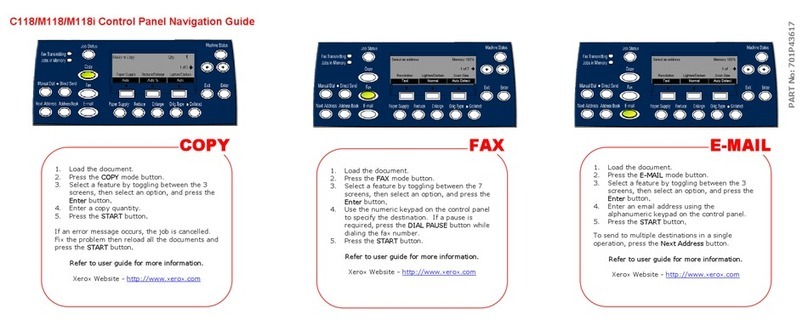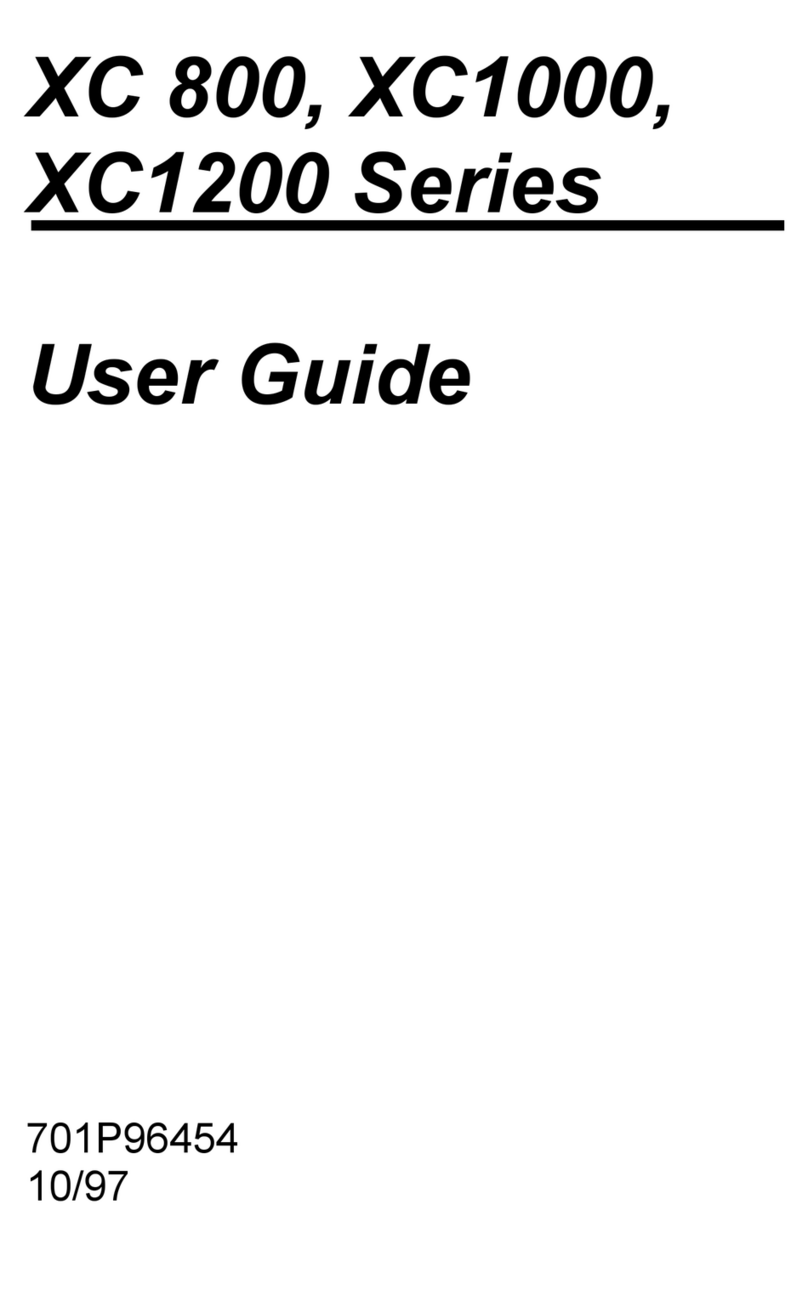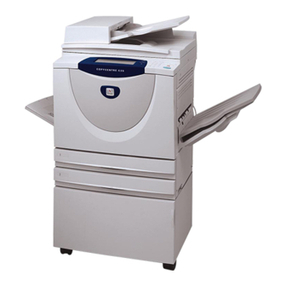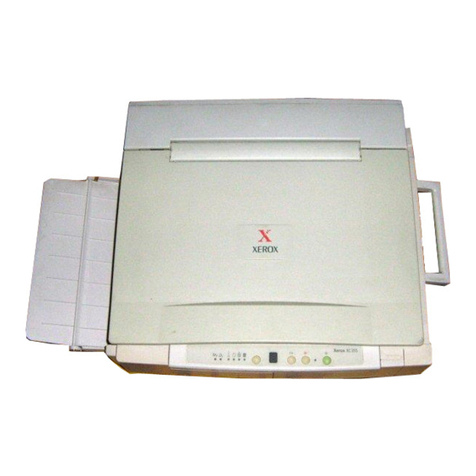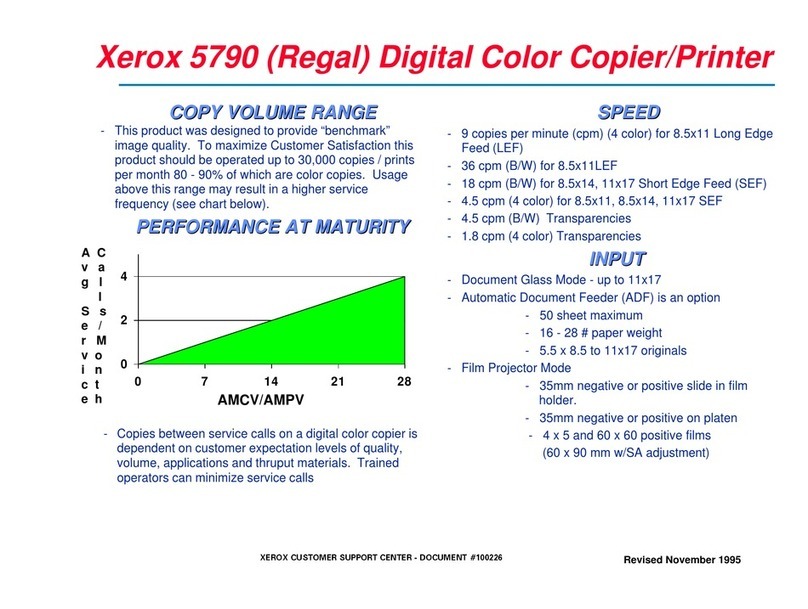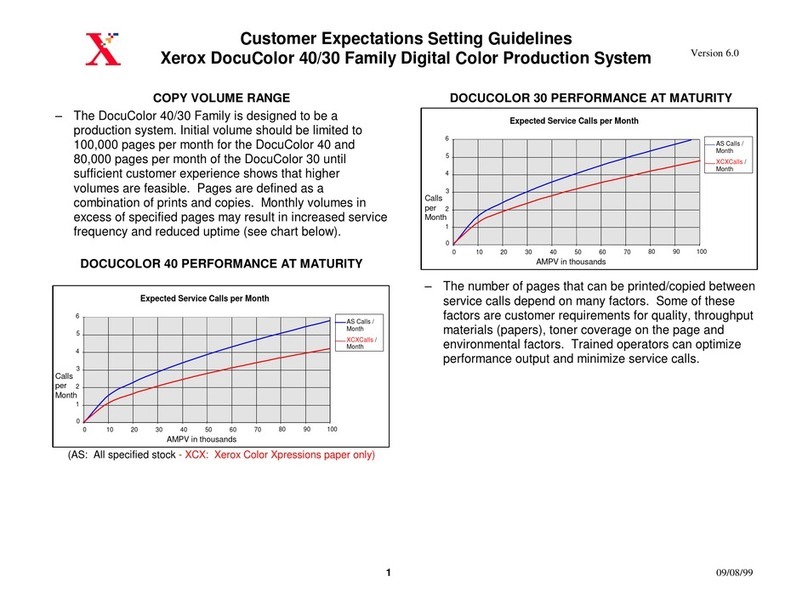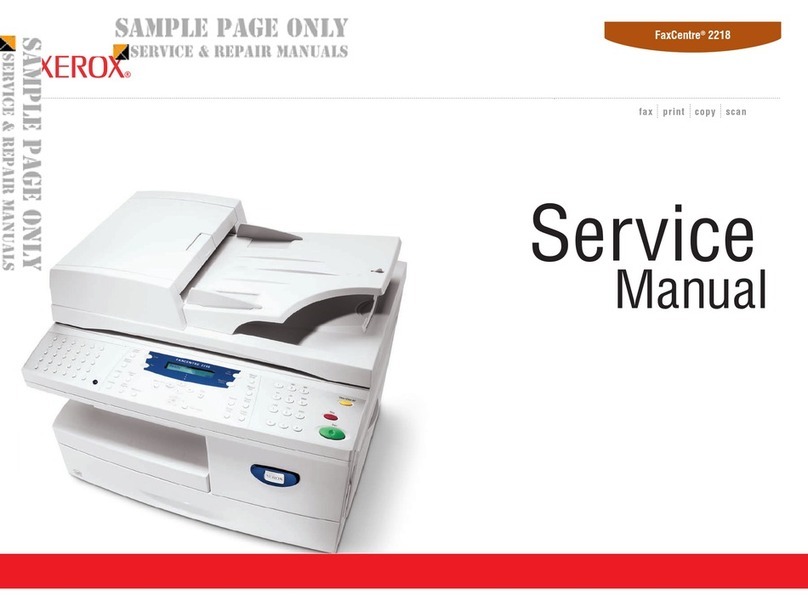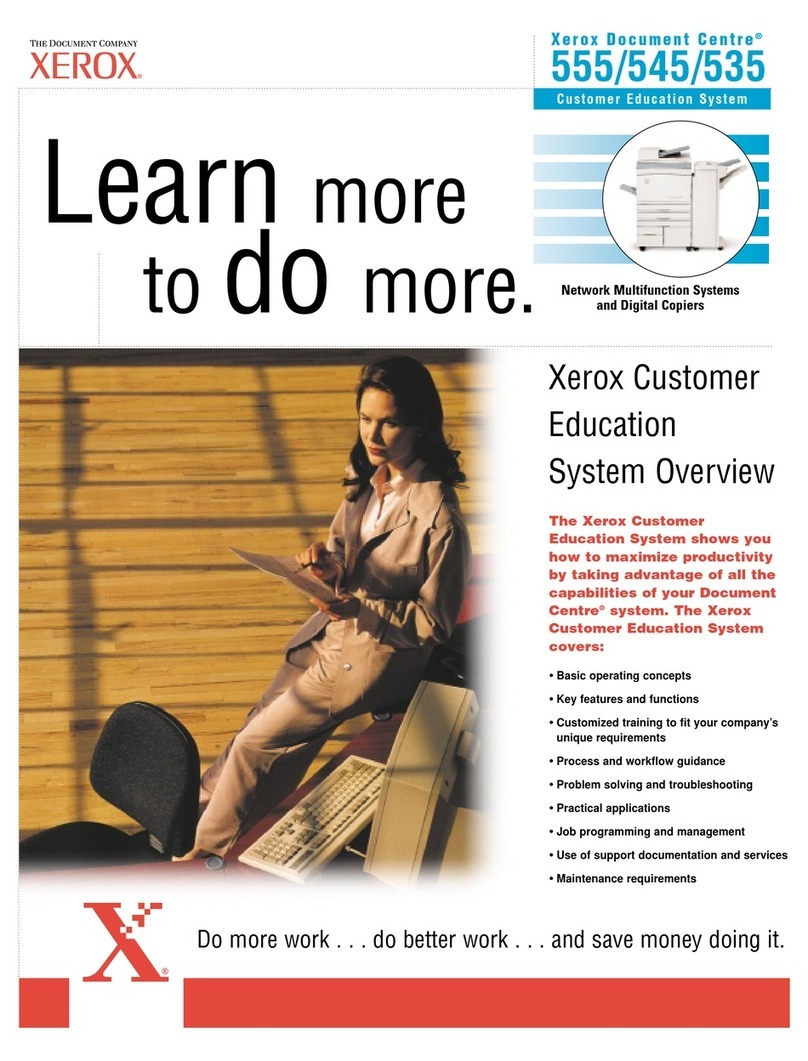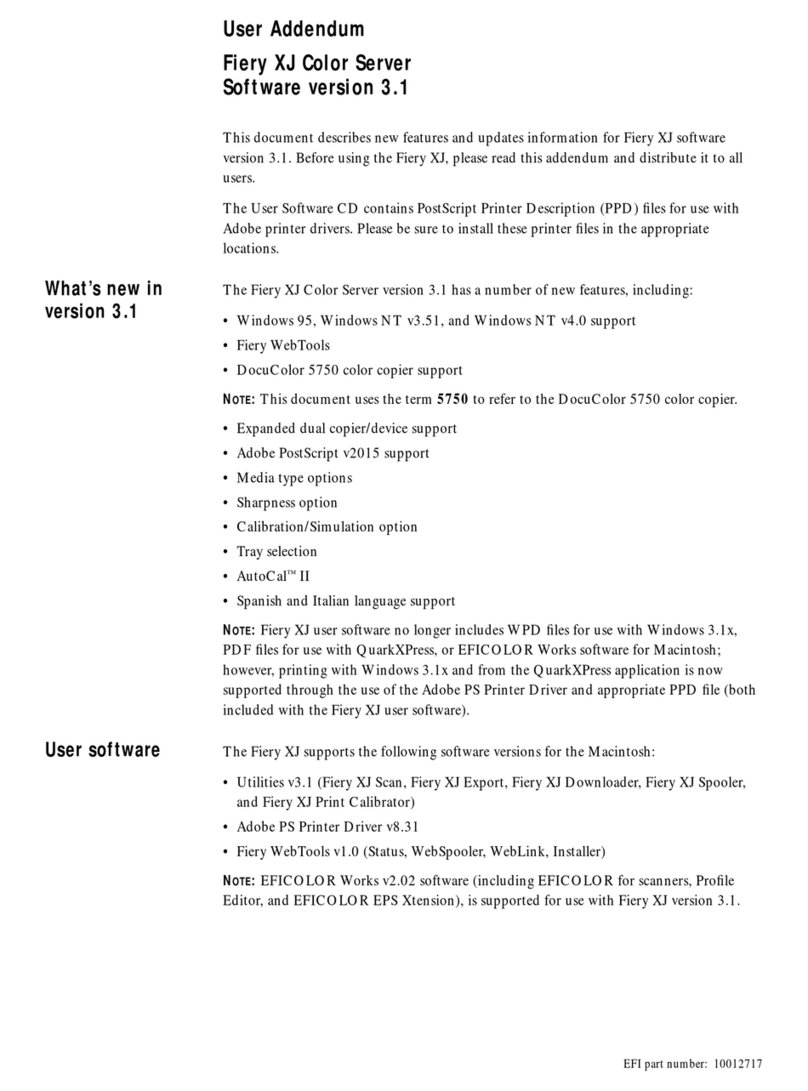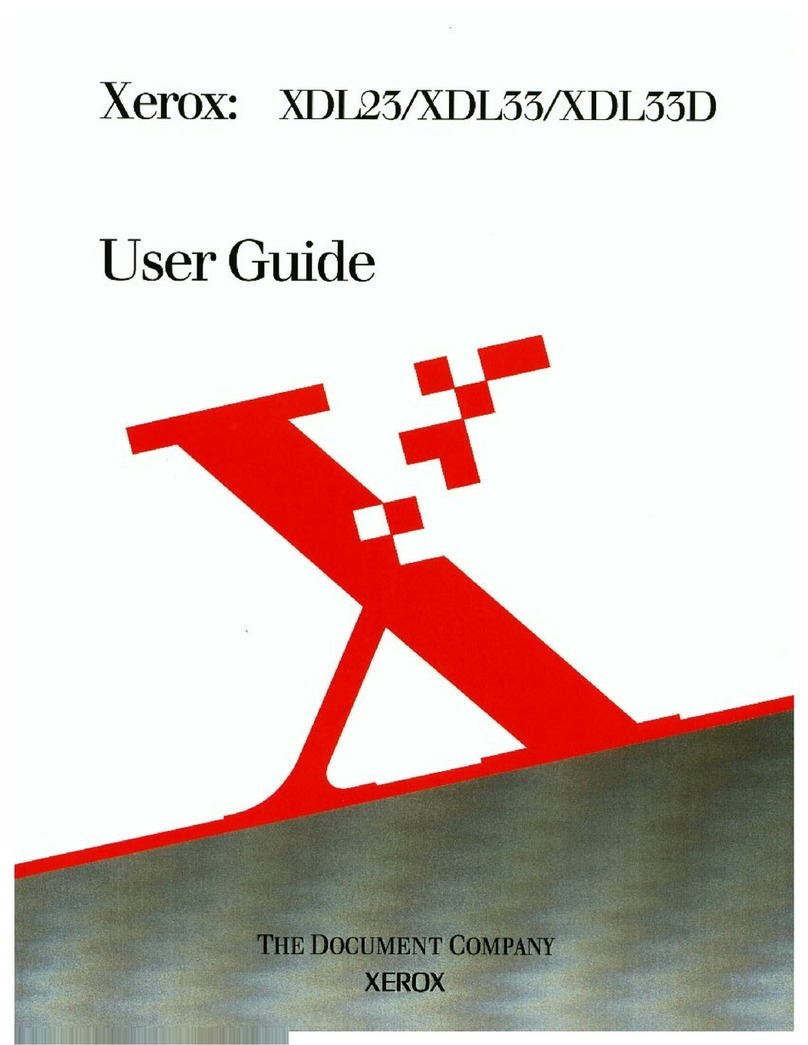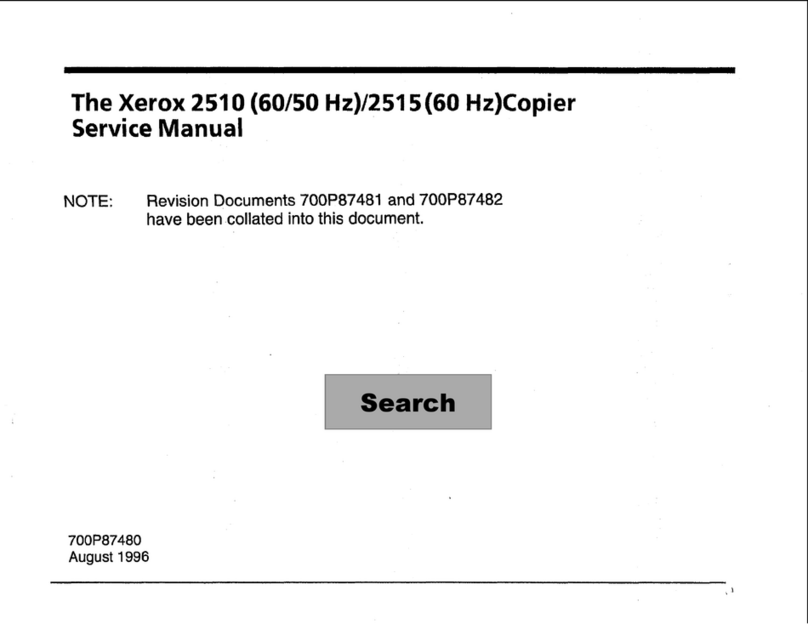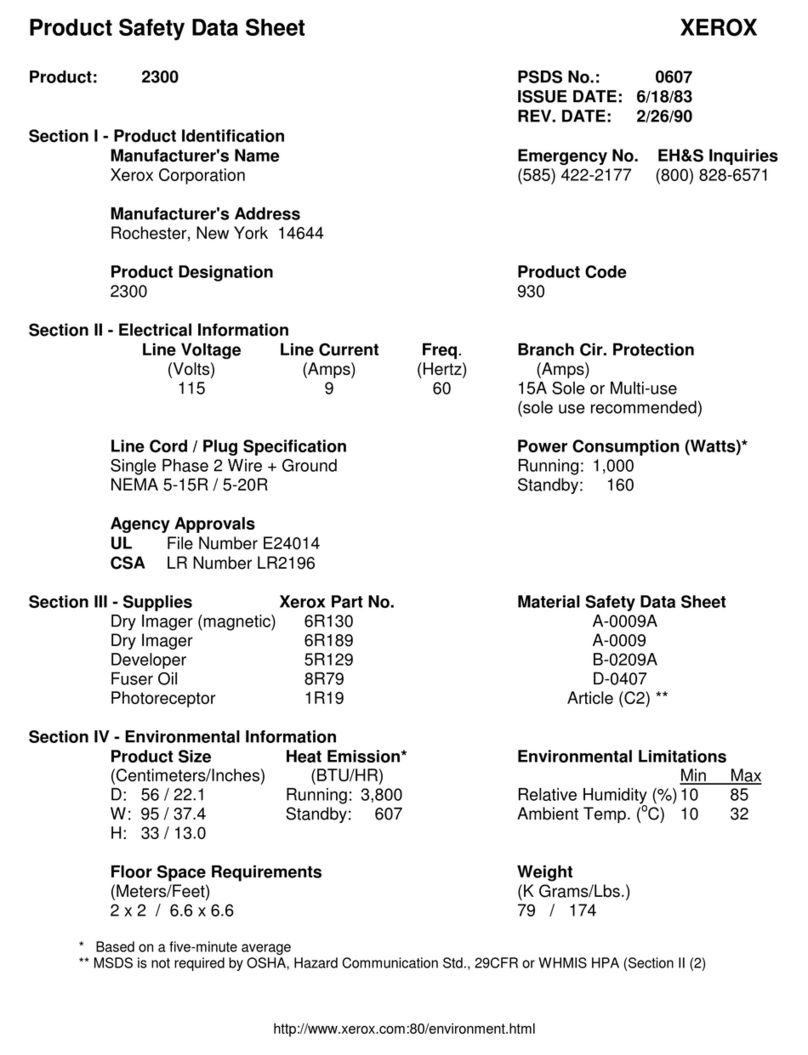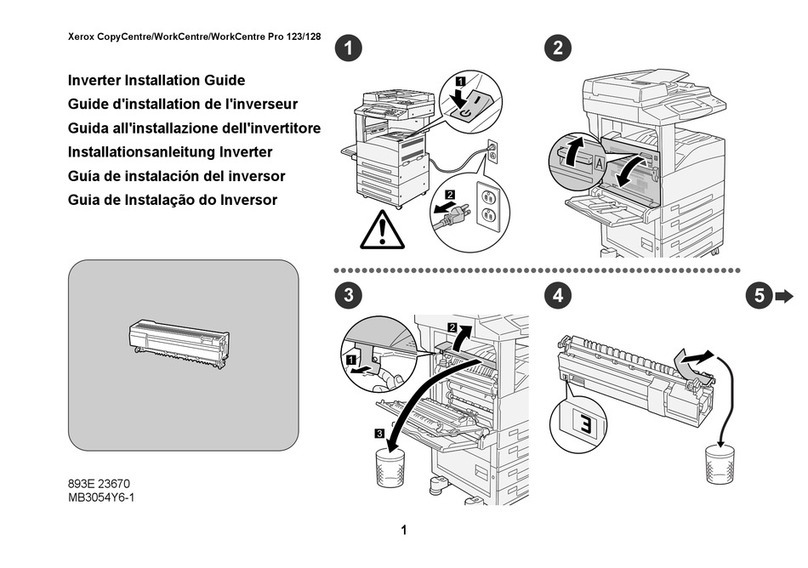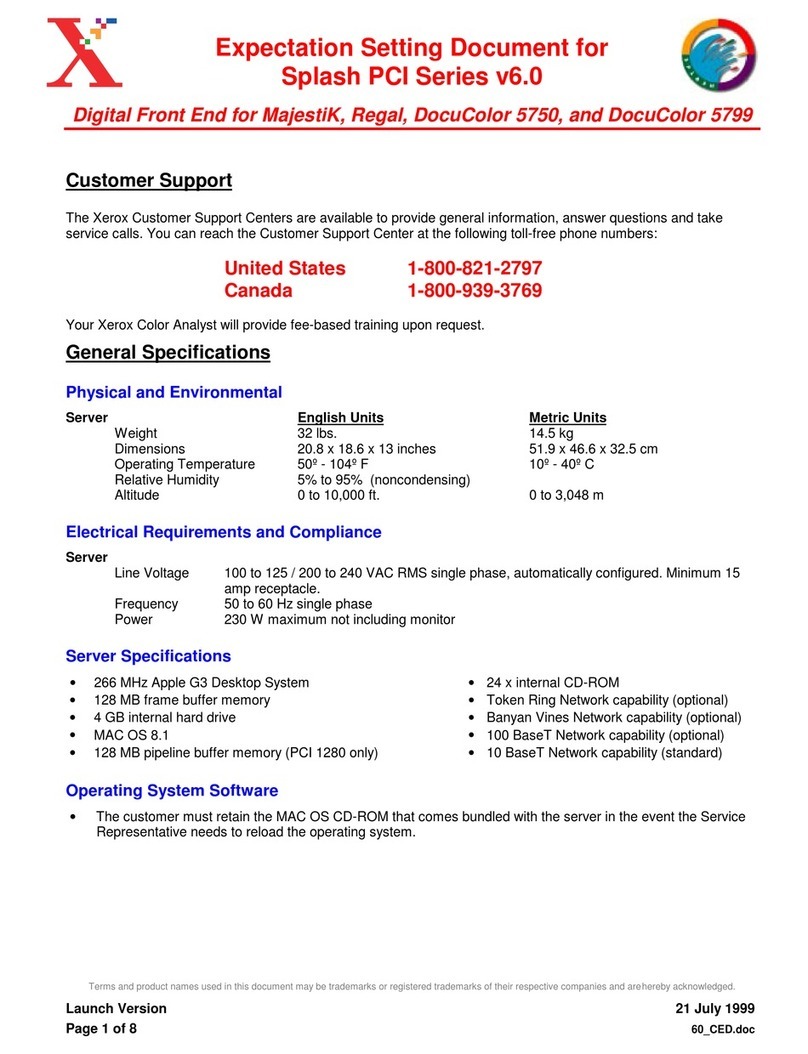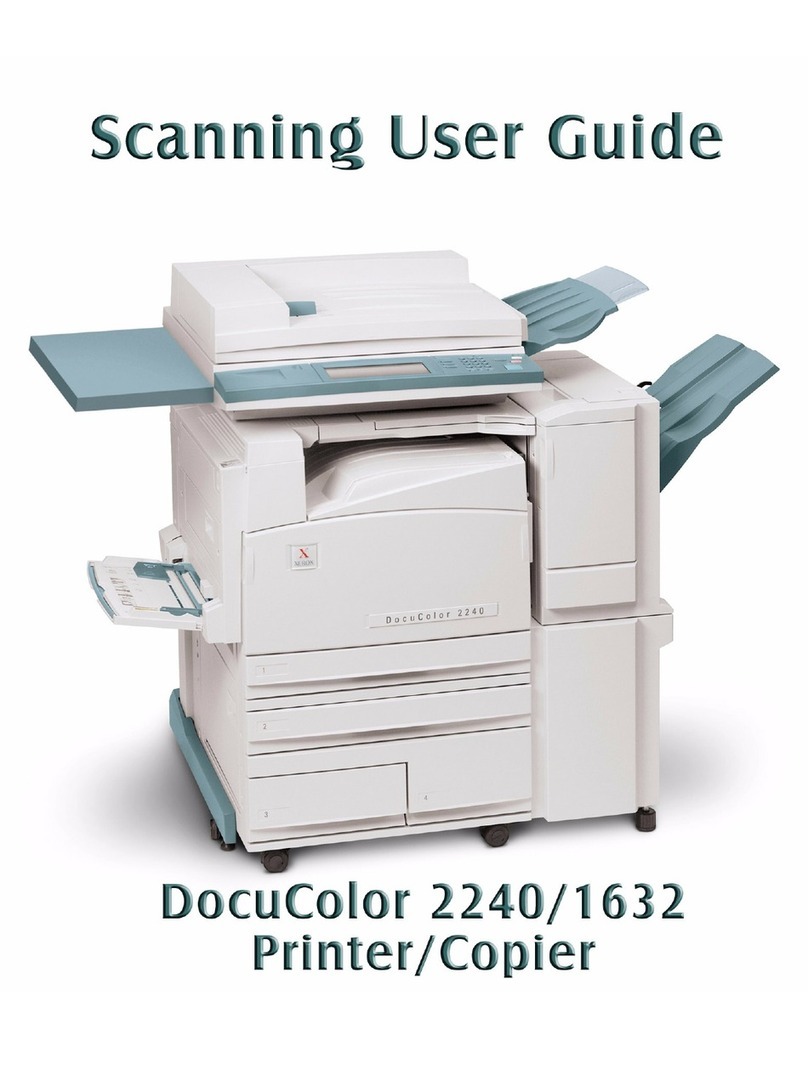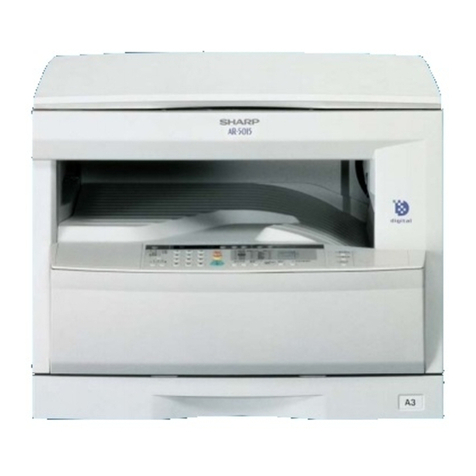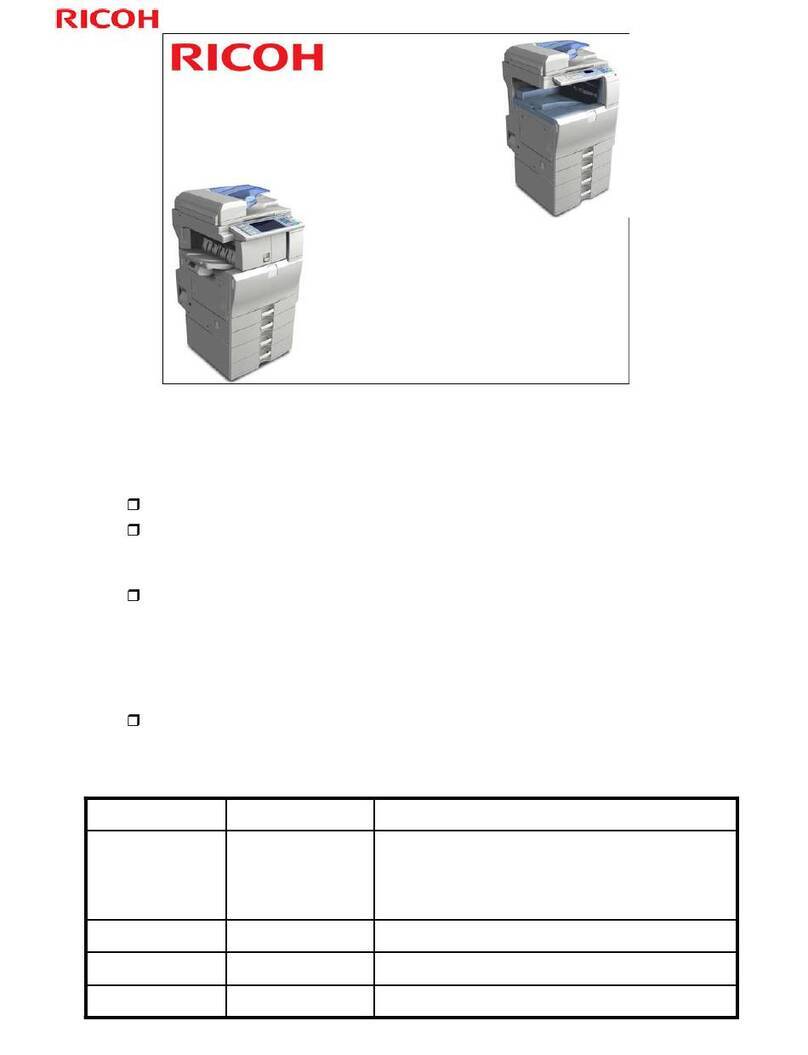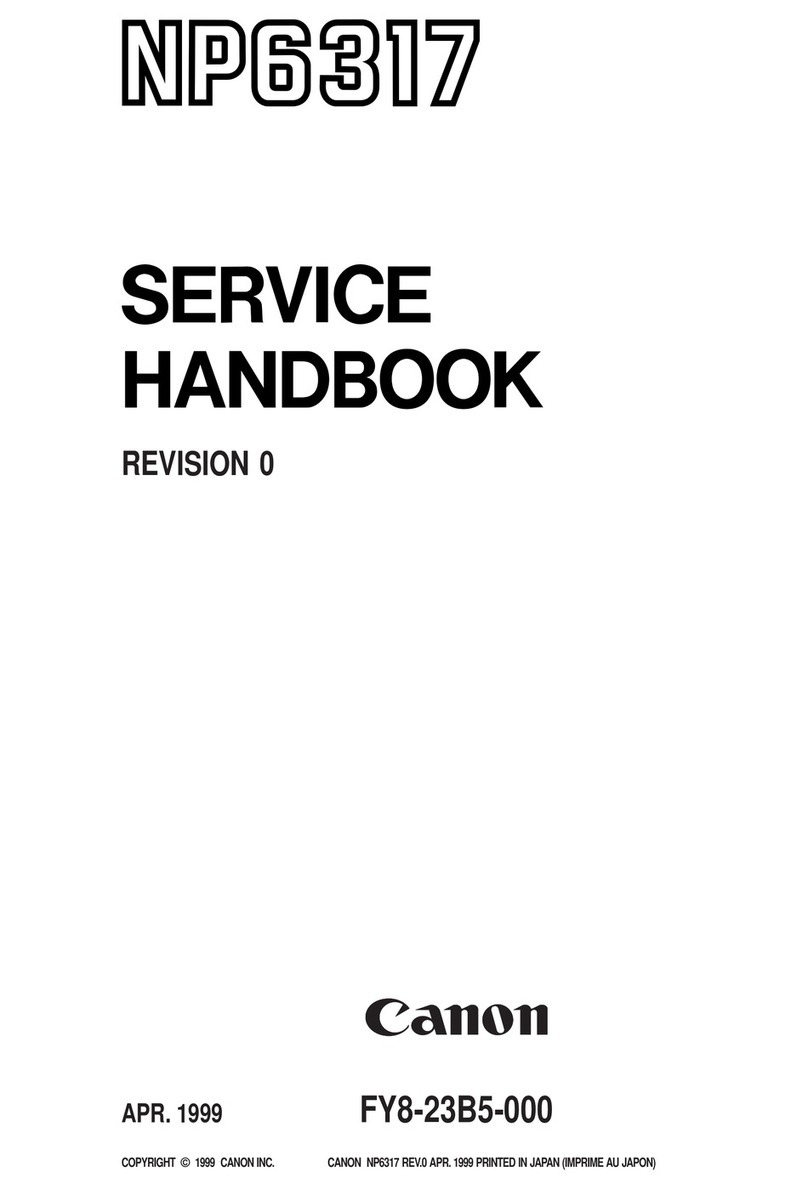
HowTo UseThis Manual
Always begin withthe Service Call Procedures,
Section
1.
Perform Initial Actions to identify
andclassifytheproblem.
Then proceedtoone ofthe following sections
ofthemanualtocorrectthe problem.
Section
2
contains the Status Indicator RAPs.
Use these RAPs ifthe copier
is
notoperational,
such as when a Status Code is displayed or
there
is
an improper indication, or "blank"
display, etc.
Section
3
is
used to troubleshoot Image
Quality problems. If you are not sure of the
type of image quality defect that
is
occurring,
use the contents page in Section
3
to find a
defect that best represents the type of defect
that
is
onthecopy.
When usingSection
2
orSection
3,
you may be
directed to Section 4 to perform repair or
adjustment procedures, or to Section
5,
Parts
List.
Next, perform the Normal Call procedures.
Now determine if Extended Maintenance has
tobeperformed.
For an Extended Maintenance Call, perform
the Extended Maintenance Procedures in
Section
1.
After performing Normal Call or Extended
Maintenance, perform Final Actions toensure
thatthecopier meetsthecopyspecifications.
Multinational Configuration
Differences Repair
I
Adjustment Procedures
This manual contains information that applies
toUS0 (USA), EO (Europe),
XCL
(Canada), and
XLA
(Latin America). US0 references usually
apply to XCL and XLA. If a USO, EO, XCL or
XLA copier configuration
is
different, the
specific USO, XCL,
RX
or XLA information will
beshown by itself.
"Dry Ink" means the same as "Toner" and
"Tag" meansthesame as "Mod".
RepairAnalysis Procedures(RAPs)
A RAP
is
a series ofsteps designedtolead you
tothe cause of a problem. In each step, you
will perform an action or observe an
occurrence. At each step, astatement
is
made
thathasaYes (Y)or No(N) answer.
If the answer
is
NO, perform the action
following the NO. If the answer
is
YES,
proceedtothenextstep.
Whenseveral itemsare listed, performthem in
theorder listed.
Proceed through the steps only until the
problem is solved. There is no need to
continue with the RAP after the problem
is
corrected.
The repair procedures provide detailed steps
on how to remove and replace components.
The adjustment procedures provide detailed
steps onhowtocheck and adjust components.
Some copiers have been modified by various
design changes. Each change or modification
is
labeled with a TaglMOD (modification)
number. The TaglMODnumbersare identified
inthe Change TaglMOD Index in Section
6
of
thisService Manual.
When a modification affects how a particular
procedure is performed, the procedure or
steps are identifiedwith either a WITagIMOD
or a WIO TagIMOO statement.
Each
procedure or step that is affected by a
modification is identified with the statement,
WI TaglMOD followed by the modification
number. The W1 in the statement indicates
that this step must be performed on copiers
that are assembled
yitJ
that specific
modification.
When the procedure or steps are not affected
by a particular modification, they are
identified with the statement, WIO TagIMOD
followed by the modification number. The
WIO in the statement indicates that this step
must be performed on copiers that are
assembledwithoutthat specific modification.
(continued)
12198
Introduction
viii
3001

